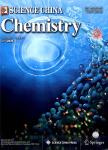Unraveling the evolution of oxygen vacancies in TiO/Cu and its role in COhydrogenation
作者机构:State Key Laboratory of Baiyunobo Rare Earth Resource Researches and Comprehensive Utilization Baotou Research Institute of Rare Earths School of Materials Science and Engineering Zhejiang University Institute of Zhejiang University-Quzhou College of Chemical and Biological Engineering Zhejiang University Department of Chemistry Western Washington University Shanxi-Zheda Institute of Advanced Materials and Chemical Engineering
出 版 物:《Science China Chemistry》 (中国科学:化学(英文版))
年 卷 期:2024年
核心收录:
学科分类:081704[工学-应用化学] 07[理学] 081705[工学-工业催化] 08[工学] 0817[工学-化学工程与技术] 070303[理学-有机化学] 0703[理学-化学]
基 金:supported by National Key Research and Development Program of China (2022YFE0128600, 2023YFA1508103) National Natural Science Foundation of China (22278365) Natural Science Foundation of Zhejiang Province (LR22B060002) the grant from ShanxiZheda Institue of Advanced Materials and Chemical Engineering (2021STAT-002)
摘 要:The remarkable contribution of oxygen vacancies has been revealed by the operando spectroscopies for methanol synthesis from CO2hydrogeneration on the reducible metal oxide-supported copper catalysts. However, a challenge remains in the intrinsic understanding of the evolution and advantage of oxygen vacancies for methanol synthesis. Here we prepare the TiO2–x/Cu with different oxygen vacancy densities by adjusting the ball-milling frequency. At the optimal condition, a TiO2–x/Cu with more oxygen vacancies delivers an excellent methanol yield of 26.5 mmol g-1h-1at 300 °C with a selectivity of more than 70%. The combined analysis of experimental characterizations and theoretical calculations reveals that the mutual dispersions of TiO2–xand Cu driven by mechanical energy induce the electron rearrangement in the d orbital of the Ti atom and relax the Ti–O binding at the interface, which facilitates the formation of oxygen vacancies that further reduce the barrier of CO2hydrogenation to*HCOO due to higher nucleophilicity of titanium ions.



